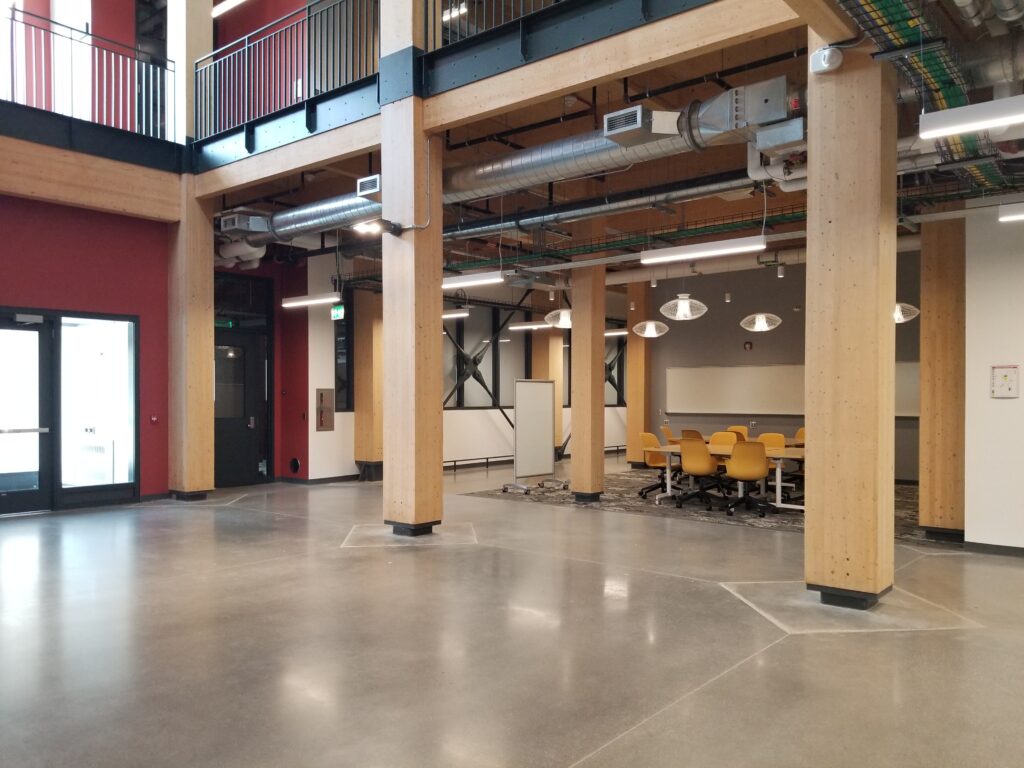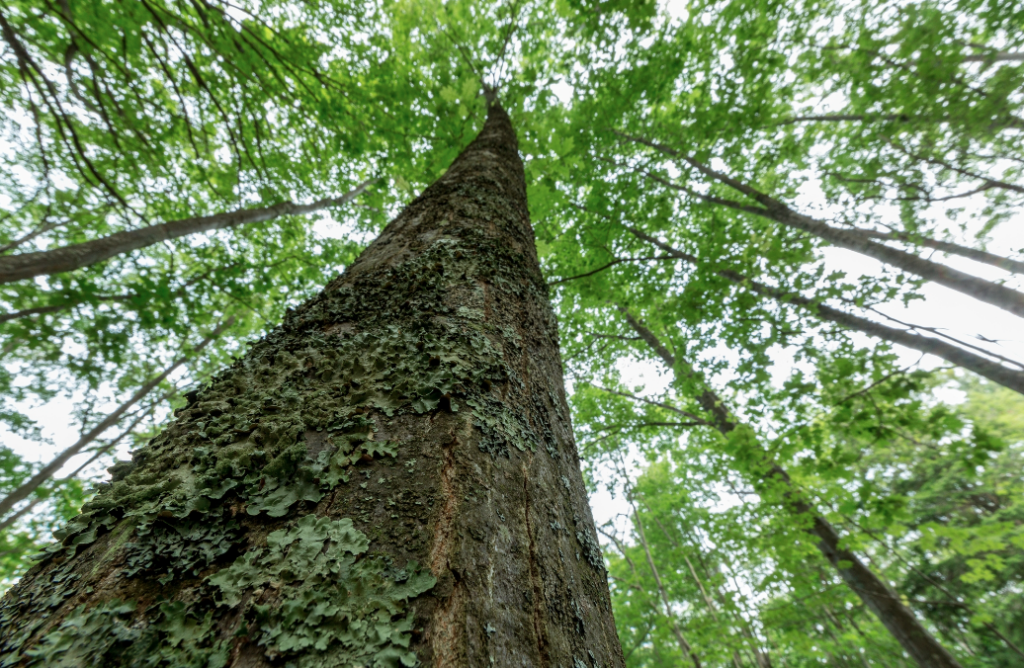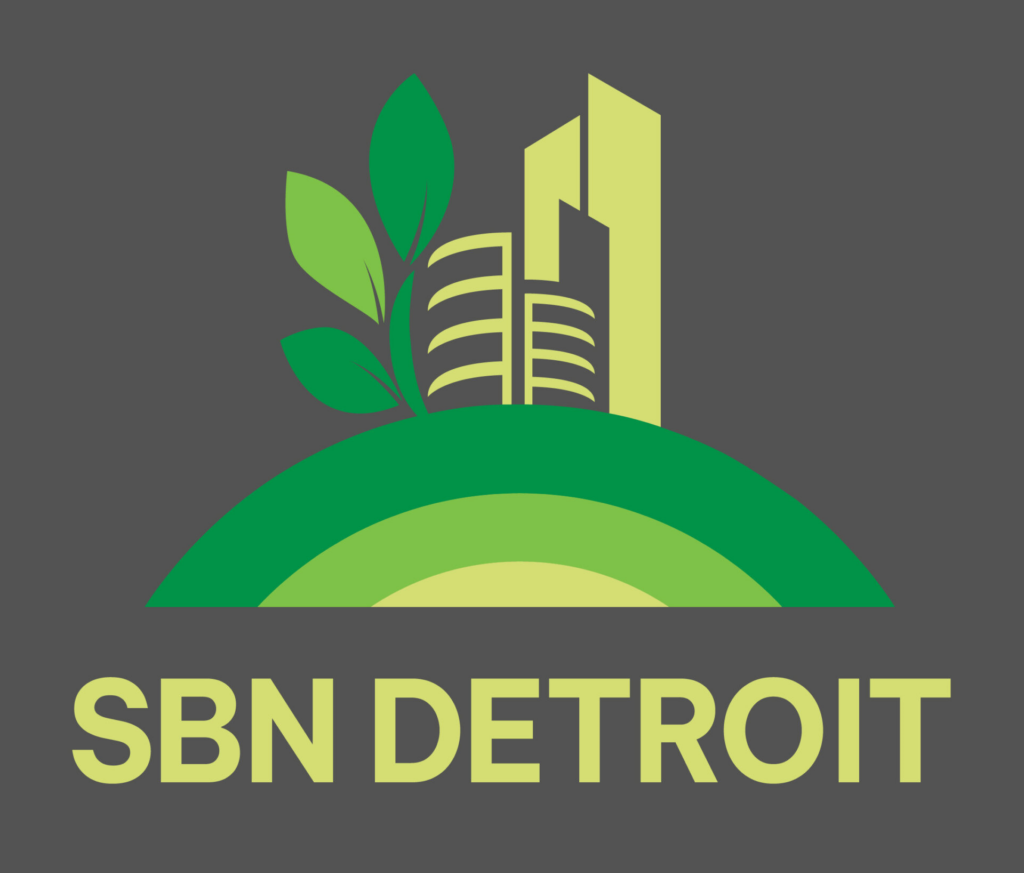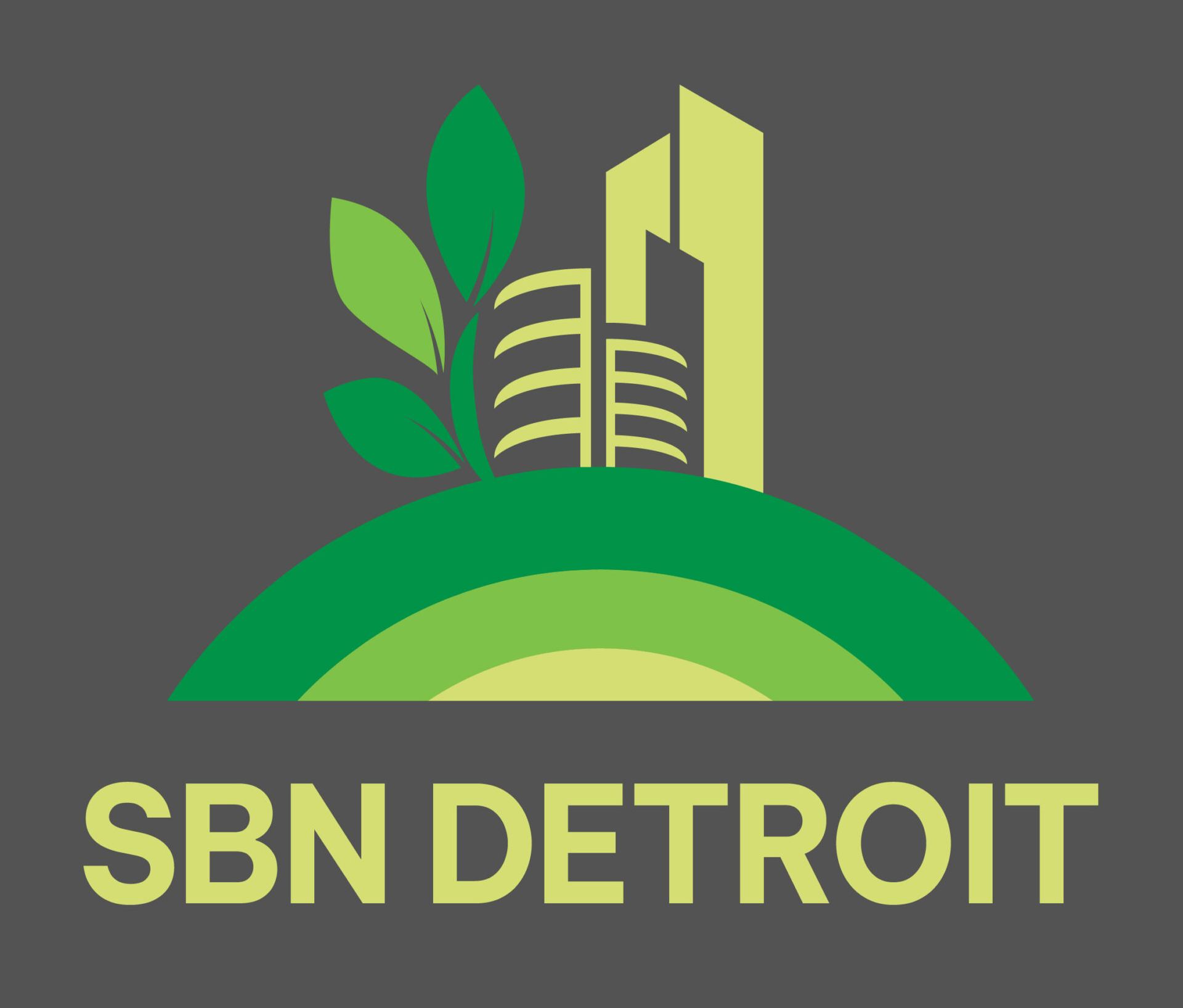Building with Purpose

MassTimber@MSU is a cross-disciplinary initiative at Michigan State University dedicated to advancing mass timber construction and manufacturing in Michigan. Collaborating with partners across construction, forestry, development, and state agencies—including the Michigan Department of Natural Resources—the initiative leverages MSU’s land-grant mission through research, teaching, stakeholder engagement, and policy development to build a sustainable mass timber future for the state. SBN Detroit interviewed Sandra Lupien, Director of MassTimber@MSU, about the environmental, economic, and design implications of mass timber and the growing momentum behind the material in Michigan and beyond. Q: What is the MassTimber@MSU initiative, and what inspired its creation? A: MassTimber@MSU is a collaboration across MSU’s School of Planning, Design and Construction, Department of Forestry, and MSU Extension. We work with partners across the state—including construction professionals, foresters, community and development organizations, and state agencies like the Michigan Department of Natural Resources—to advance mass timber construction and manufacturing in Michigan. Our approach reflects MSU’s land-grant mission: research, teaching and curriculum development, stakeholder engagement, and policy exploration that could support mass timber adoption. Since I started in this role in July 2021, momentum is growing. There are now more than 65 mass timber projects in the pipeline in Michigan. The STEM Teaching and Learning Facility on MSU’s campus, which is the second building in the state to use cross-laminated timber (CLT), helped demonstrate what’s possible. And we’re now seeing serious interest from prospective producers who are looking to locate in Michigan. Q: What are the environmental benefits of mass timber in terms of sustainability, carbon reduction, and climate resilience? A: This is exactly what drew me to mass timber. It’s a tool in our toolkit to reduce carbon emissions, support sustainable communities, and help foster healthier, more resilient forests. Globally, the built environment accounts for about 39% of greenhouse gas emissions—28% from building operations and 11% from construction materials like concrete, steel, and glass. These materials are essential, but they’re energy-intensive to produce. Wood, by contrast, is a renewable resource that stores carbon. When we use wood in construction, we’re not only lowering a building’s embodied carbon footprint—we’re also locking that carbon into the structure itself. At MSU, the STEM Teaching and Learning Facility contains roughly 3,000 cubic meters of mass timber, which stores about 1,856 metric tons of carbon dioxide equivalent. That’s comparable to removing the emissions from 4 million miles driven by an average car. Mass timber buildings, in this way, become carbon storage banks. On the forestry side, we know that many forests evolved with low-intensity natural fires that helped maintain healthy densities. Today, many of our forests are overcrowded, which makes them vulnerable to pests, disease, and catastrophic wildfire. Because of past logging practices and fire suppression, we have an obligation—and opportunity—to steward forests more sustainably. When we do that, we can produce wood that extends the climate benefits of trees, especially if that wood would otherwise decay or burn. Q: How are MSU students and faculty engaging with mass timber—from design to research to real-world application? A: There are three main academic areas deeply engaged with mass timber: Construction Management, Forestry and Biochemistry, and Civil and Environmental Engineering. We have undergraduates, master’s students, and Ph.D. candidates working with faculty on projects across those disciplines. In Construction Management, Professor George Berghorn is developing mass timber curriculum modules that can be used nationally in engineering and construction programs. In Forestry, Professor Mojgan Nejad is doing incredible work on developing bio-based adhesives and coatings for use in mass timber—replacing fossil-fuel-based polyurethane with lignin-based alternatives. She’s actively working toward commercialization. We’ve also done economic research to analyze supply chains and survey demand, which helps inform developers and policymakers. And beginning Spring 2025, we launched a new course focused entirely on mass timber, led by Dr. George Berghorn and tailored for both undergraduate and graduate students. Q: From an economic perspective, how could mass timber help revitalize Michigan’s forestry sector and rural economies? A: We’ve modeled the economic impacts of launching a 50,000-cubic-meter-per-year mass timber manufacturing facility in Michigan. The results are exciting: such a facility would contribute $152 million to the state’s GDP and support 318 jobs. There’s a strong need to find new uses for Michigan wood. With the paper industry in decline and other traditional markets shifting, mass timber presents an opportunity to create high-value products that support Michigan jobs and rural economies. Q: How does the initiative align with Michigan’s climate goals or sustainable development strategies statewide? A: The MI Healthy Climate Plan, which outlines the state’s climate goals, directly mentions mass timber three times—as a key strategy for reducing emissions in the built environment and managing natural lands sustainably. The City of Lansing’s Sustainability Action Plan also highlights mass timber, and East Lansing has even amended its zoning ordinance to incentivize developers to use mass timber and build LEED-certified projects. It’s encouraging to see this kind of policy support—it sends a signal that mass timber can and should be part of Michigan’s climate solution. Q: What does Michigan’s existing forest resource look like, and how does sustainable forestry tie into your vision? A: Healthy, resilient forests are the foundation of everything we do. In Michigan, about 70% of our forest resource is hardwood and 30% is softwood. Most mass timber products currently certified for use in the U.S. are made from softwoods. That said, Michigan does have suitable softwood species. For example, red pine was certified for structural use because the Michigan DNR prioritized using Michigan wood in a customer service building in the Upper Peninsula. That’s a great example of state leadership driving local wood utilization. As the industry evolves, there’s potential to expand the species we can use in mass timber production. Q: Looking ahead five to ten years, what’s your boldest vision for the impact of the Mass Timber Initiative? A: I’d like to see commercial buildings—everything from multifamily housing to community centers to industrial facilities—considering mass timber from the outset, not as a novelty but as a viable, mainstream option. Mass timber
The Nature Conservancy of Michigan – Working at the Intersection of Economic Development, Nature, and Sustainability

The Nature Conservancy in Michigan recently released its 2022 Michigan Conservation Results Report that outlines the work it is doing to tackle conservation issues that range from climate change to biodiversity loss. With 32,000 members, a staff of 55+, 25 trustees, and many contributors, partnerships, and donators, 32,541 acres of land became protected last year, totaling 437,000 acres to date. We spoke to Associate State Director Patrick Doran about some of the key initiatives outlined in the report. Q: A recent acquisition of land in the Keweenaw Peninsula nearly doubled the peninsula’s protected lands, which provide habitat for many iconic species. How does this impact the state and Southeast Michigan? A: It’s a great question – how the work we are doing in Northern Michigan impacts the entire state and beyond – and I want to give some context around that. TNC is the world’s largest conservation organization with almost 6,000 employees around the world. When we have a project in place, we think not only about executing that project with boots on the ground but also think about how it impacts the entire system. We lift our heads and assess the impact on the region, the Great Lakes, the state, and the world. We think about how it will affect the economy, the air, the climate, people’s quality of life, and more. Securing the 30,000-plus acres in Keweenaw is amazing for us. I also want to note that there are several partners and entities involved in these efforts. TNC could never have done this alone. The opportunity to move land into conservation at this scope just does not exist in too many places in the US. The land has been under traditional timber ownership and management. We see TNC as a temporary holder – maybe three to five years – and eventually, we’d like to see the land secured by the state and local townships and municipalities and counties. We believe local ownership achieves the best conservation outcomes. So, we will ensure it’s protected, and that the forest is under a sustainability management plan, so that the conservation status improves from what it was, all the while making sure that it remains available for public use and recreation. This project truly sits at the intersection of economic development, nature, and sustainability, and there are several ways that it connects to other parts of the system. Relating this to the Southeast Michigan area, ecologically, in the spring Keweenaw is one of the most important migration areas in the Midwest. Millions of hawks, songbirds, and more move from South America, hit the Great Lakes to the Detroit corridor up to the U.P., and the majority fly up the Keweenaw Peninsula before making the daunting trip across Lake Superior. Southeast Michigan is an important stop in their migration process. So, there is this interesting species connection between the Lower Peninsula and the U.P. The connection also ties into the economy and also climate change. Those forests are places where we can store carbon through the growth and management of trees and also keep the industry intact. It’s a careful balance. Sequestering carbon will help meet climate change goals and this impacts the whole state. We have robust timber and water industries throughout the state and in Southeast Michigan, and that’s very important to our economy. Another connection this project represents is with businesses across the state. TNC is exploring the most effective ways to work with companies across the state in their quest to meet their sustainability goals. The forests can support these companies in this quest, and the companies are in turn investing in the forests. TNC also has a partnership with the Michigan Manufacturers Association. The goal is to help educate and assist small and medium-sized businesses with sustainability planning. We offer a suite of workshops for these manufacturers and companies. Two good examples are Steelcase and Consumers Energy – we began working with both companies last year. Q: According to the report, all 47,000 acres of TNC’s forest reserves in Michigan are now FSC®-C008922 certified. What does this mean? A: What FSC certification does is up the level of sustainability management and make sure all are adhering to best practices in terms of how many trees are cut, frequency of cutting, how streams and lakes are impacted, etc. This makes the whole system healthier. Again, timber is a huge part of the state’s economy, and it’s important to manage this industry in a way that is thoughtful and promotes the ability to sequester carbon. The focus is to achieve our ecological goals and at the same time keep land in the timber industry. We are also involved in working with the manufacturing industry in Southeast Michigan and across the state to ensure they are actively using more sustainably produced timber. When the supply chain demands this, it becomes a more virtuous cycle. Relating this to the construction industry, there is also a movement in place to use cross-laminated timber or mass timber, which offers more long-term carbon storage in comparison to using cement or other building materials. The DNR and Michigan State University are working on reinvesting this back into the building and construction process. Q; Regarding our parks and waterways, the report references Public Act 53 of 2022, saying that ultimately $2.3 billion of the historic state funding included in the act was designated for the improvement of Michigan’s water infrastructure, with an additional $450 million for state and local parks. What is TNC’s role in these improvements? A: TNC operates at a policy and system level to impact our parks and water across the state. Michigan sits in the middle of one of the world’s largest freshwater systems, so we have to protect that. We work to promote healthy infrastructure and programs that support investing in that. Regarding the importance of maintaining our parks and nature within urban areas, I was at a conference last year in Detroit and began asking businesses why they think investing


